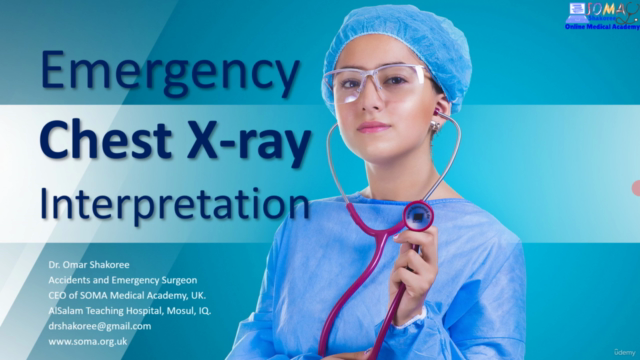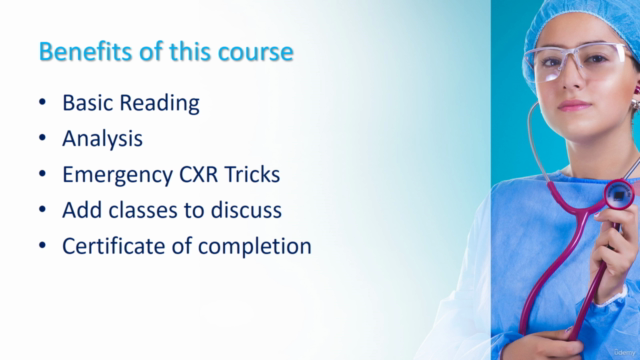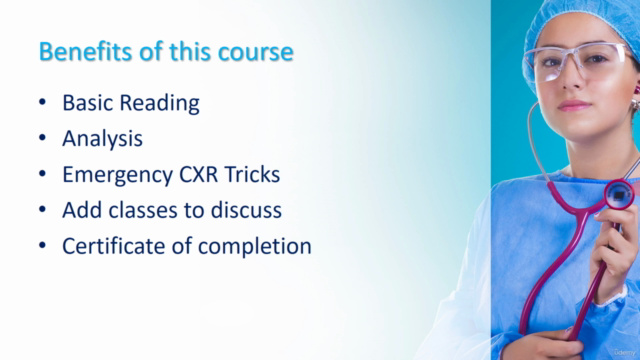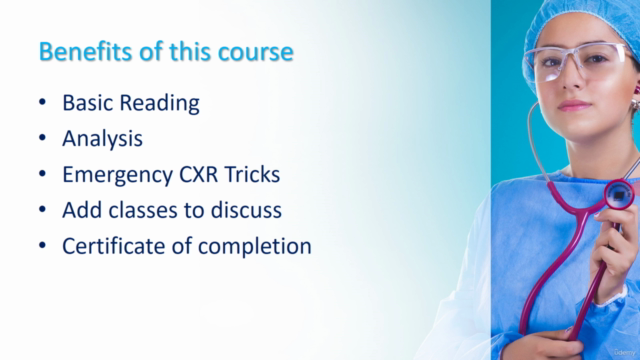How to Read Chest X-Ray ( CXR ) in Emergency room

Why take this course?
🚑 Master reading CXR in Emergency: From Basics to Professionality 🚀
Course Headline: Unlock the secrets of Chest X-Ray interpretation with our comprehensive, one-day course designed for healthcare professionals at all levels! Whether you're a medical student, FY1, FY2, or a Specialist Registrar, this course will empower you to confidently interpret CXRs in the high-pressure environment of the Emergency department. 🎓
Course Description: The Chest X-Ray (CXR) is an indispensable tool in hospital medicine, often requested more than any other imaging investigation. Yet, many healthcare professionals find themselves challenged by its interpretation. This course bridges that gap, transforming your confidence from basic understanding to expert analysis. 🏥
Why Enroll?
- Comprehensive Learning: Engage in a structured learning experience that starts from the basics and takes you through to professional proficiency in CXR interpretation.
- Interactive Format: Benefit from a blend of short lectures, hands-on tutorials, and interactive sessions where you'll analyze real CXR images on your own device.
- Real-World Application: This course is tailored to the practical demands of the Emergency department, providing you with skills applicable to both traumatic and non-traumatic cases.
Course Highlights:
- Anatomical Overview 🎬: We begin with a concise review of the anatomy visible on a CXR, ensuring you have a solid foundation before we move on to more complex interpretations.
- Structured Assessment: Learn to systematically assess CXRs using the comprehensive mnemonic "ABCDEFGHI":
- Airways: Look for signs of airway compromise or obstruction.
- Bones: Examine the bony structures for fractures or soft tissue masses.
- Cardiac Silhouette: Evaluate the cardiac outline for enlargement, effusions, or other cardiac abnormalities.
- Diaphragm: Assess the diaphragmatic contours and function.
- Effusions: Identify pleural, pericardial, or peritoneal effusions.
- Fields (Lungs): Analyze lung fields for pneumonia, collapse, consolidation, or other lung pathologies.
- Gastric shadow: Determine the position and size of the gastric air bubble.
- Hilum: Inspect both hilar regions for lymphadenopathy, masses, or other abnormalities.
- Instruments/Foreign Bodies: Recognize foreign objects or surgical instruments that may be present in the lung fields.
With step-by-step guidance and real CXR images to dissect, you'll see your skills develop before your eyes. 🖥️✨
Course Benefits:
- Practical Skills: Transition from theory to practice with hands-on analysis of actual CXR images.
- Confidence Building: Move from hesitation to confidence in reading CXRs, making you a more effective practitioner.
- Peer Discussion: Engage with fellow healthcare professionals in interactive discussions, broadening your perspective and expanding your knowledge base.
- Lifelong Learning: Acquire a skill set that will serve you throughout your medical career.
Don't miss this opportunity to enhance your diagnostic capabilities and become more effective in the Emergency room. Enroll now and secure your spot in our "Master reading CXR in Emergency" course! 👩⚕️✨
Course Gallery




Loading charts...